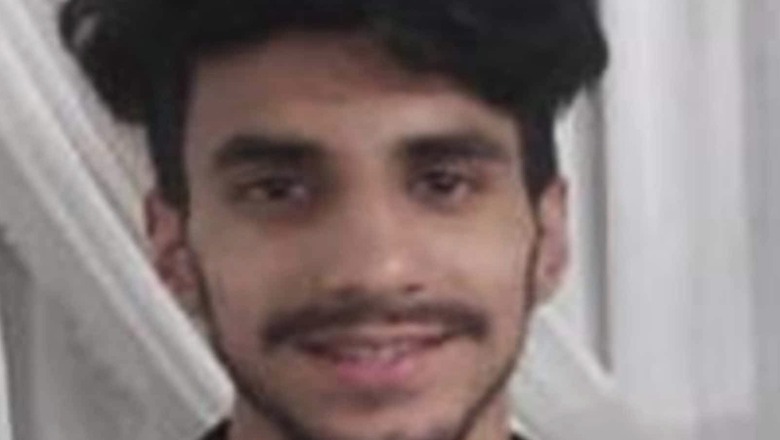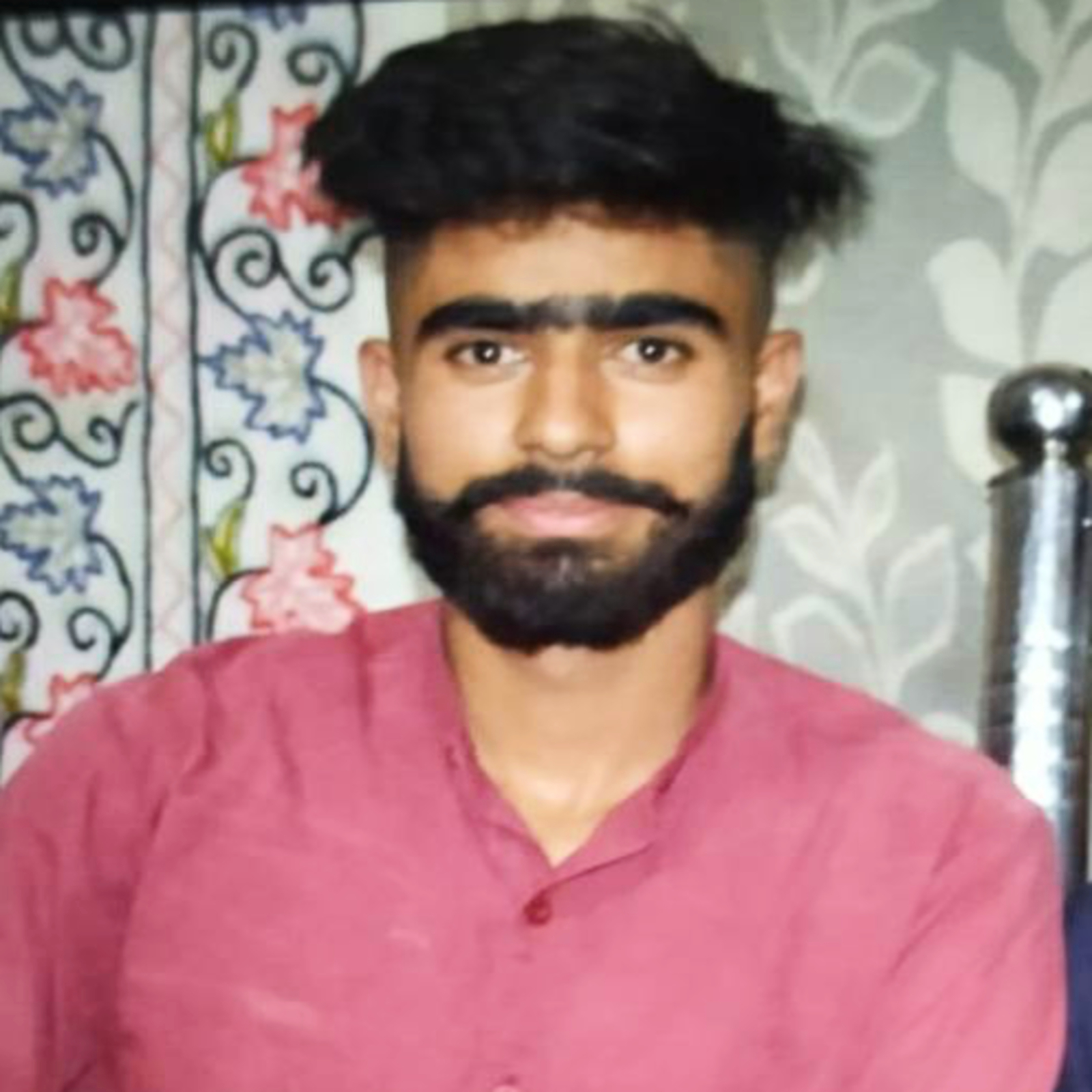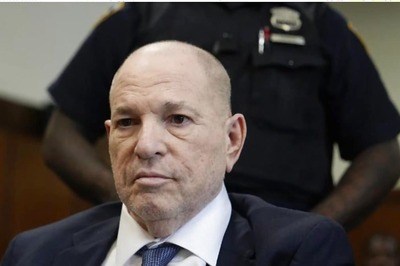
views
Early one evening in May, dressed in a blue shirt, black trousers and bright-red sneakers, Mehran Yasin Shalla left his home, just around the corner from the shrine of the Sufi mystic Kaka Sheikh Ibrahim in Srinagar. That evening, his family called to find out when to expect him home; Mehran, it turned out, had left his cellphone behind. The next day, Mehran’s worried father filed a missing person report with the police. Little became known until Wednesday, six months almost to the date since he disappeared, when police rang to say they had shot his son dead.
“I am the flower and the sword,” says a poem the teenager is purported to have recorded and circulated on social media soon after he left home. “I can fill the world with fragrance, or bathe in blood to give breath to my people.” “I will live by this truth, or drink from the cup of martyrdom.”
In the weeks before his killing, Mehran Shalla had come to be relentlessly pursued by the Jammu and Kashmir Police, accused of staging a series of execution-style killings in Srinagar—among them, of small-time Srinagar gangster, and alleged police informant, Meeran Ali, police sub-inspector Arshad Ahmad Mir, and, most notoriously, schoolteachers Supinder Kaur and Deepak Chand.
The story of Mehran Shalla is important, though, not just for the extraordinarily murderous course it took after he disappeared from home in May, but for what it teaches us about the growth of Kashmir’s Generation Alpha jihadists—a growing cohort that threatens the fragile peace that has held since 2019. Large crowds of young people in downtown Srinagar gathered for funeral rites held for Mehran on Wednesday night; to many, the killer was a hero.
Little in Mehran’s life marked him out from his social milieu. Educated at the Nation School in Kara Nagar up to the 10th grade, Mehran graduated from the MPML High School in Srinagar’s Bohri Kadal neighbourhood in 2019. The grades he earned were good enough to get him into the city’s Gandhi Memorial College, where he was in the second year of a Bachelor of Commerce programme at the time he disappeared from home. In his spare time, Mehran worked for a courier firm, delivering packages across Srinagar’s old city.
From at least 2016—the year when the killing of teenage jihadist Burhan Wani unleashed an uprising that swept the Indian state out of swathes of southern Kashmir—Mehran had also become active in youth circles organising street battles against the police. Like hundreds of other young Srinagar residents alleged to be involved in the street violence, he was arrested in 2018, after the collapse of former chief minister Mehbooba Mufti’s government.
Although the criminal cases against Mehran did not lead to significant prison time—he was just sixteen then—repeated visits to police stations brought him into close contact with the jihadist circle police allege has been responsible for the recent execution killings.
The leadership of the network, police say, lies with 2005-born Basit Dar, who until this summer ran a small cooking-utensil store in the village of Redwani Payeen, in south Kashmir’s Kulgam. Educated at the Government Middle School in Redwani, Basit dropped out after 8th grade. His outlook appears to have been heavily influenced by the 2016 uprising. Even as a child, two family members told Network18, Basit participated in street battles with police, drawn in by older children. There were regular run-ins with the police, sometimes involving beatings.

Then, at the end of April—a week before Mehran went missing—Basit left home, saying he had some business-related work to attend to. The family never saw him again; investigators now say he is at the centre of the execution-killing operations of the Resistance Front, a pseudonym used by the Lashkar-e-Taiba.
Interestingly, two terrorists killed with Mehran in Wednesday’s shootout—Manzoor Ahmad Mir and Arafat Ahmad Sheikh, both residents of Pulwama—were also reported missing from their homes in the same period. Exactly how the group came into contact with each other remains unclear, but all the men had participated in street violence in the 2016-2018 period.
The construction of the TRF’s networks, police say, centred on Muhammad Abbas Sheikh, killed by police in August. The son of a small peasant, and part of a large family—he has nine siblings—Abbas dropped out before completing primary school. Married at a young age to Rashida Sheikh, and soon to become a father, Abbas worked as a roadside tailor in Qaimoh.
Abbas’s family had impeccable jihadist credentials: Ibrahim Sheikh, Abbas’s oldest brother, had been killed in 1996 while serving with the Hizb-ul-Mujahideen, while another brother would die ten years later while fighting in the Lashkar-e-Taiba. Naseema Banu, Abbas’s oldest sister, had a son, Asif Sheikh, who was killed in 2008; Tauseef Sheikh, another sister, Naseema Banu, also joined the Lashkar.
From 2004 on, Abbas served multiple preventive-detention terms in prison—including for murder and kidnapping—but was never successfully prosecuted for a crime. “For him,” a police officer familiar with the case told Network18, “prison served as a kind of school, where he learned jihadist ideology and developed a network of trusted associates.”
The TRF’s campaign, Indian intelligence officials believe, is commanded by Sajid Saifullah Jatt—also known by the nickname ‘Sajid Langda’, or Lame Sajid. A native of the village of Changa Manga near Kasur, in Pakistan’s Punjab province, Sajid served in Kashmir from 2005-2007, and married a Kulgam woman, Shabbira Kuchay. The couple’s son, Umar Raja Afaq—just an infant when his parents fled Kashmir through Nepal to Pakistan—continues to live with his maternal grandparents near Kulgam.
Across Kashmir, Lashkar jihad commanders like Sajid capitalised on a growing Islamist political current.. In 2006, protesters targeted an alleged Srinagar sex-work ring, claiming it had been propped up by the Indian military. Then, the next year, the rape and murder of a Kashmir teenager provided Islamists an opportunity to campaign against migrant workers, alleging they were part of an Indian plot to bring demographic change. Early in 2008, an Anantnag schoolteacher was also attacked after a video of a group of his students dancing to pop music was circulated.
In 2008, these mobilisations exploded, after the grant of land-use rights to the Amarnath shrine. Islamist patriarch Syed Ali Shah Geelani claimed there was a conspiracy to settle Hindus in the region. “I caution my nation,” he warned, “that if we don’t wake up in time, India and its stooges will succeed and we will be displaced.”
Abbas, police records show, played a key role in organising street battles between mobs and police—in 2010 even burning down government offices in Qaimoh. As in the past, he went to prison, only to re-emerge each time with an expanded circle of contacts.
Locked in intense political competition, the governments of chief minister Omar Abdullah and then Mehbooba Mufti proved unwilling to take on the Islamists, staying fearful of alienating the religious right’s supporters in southern Kashmir.
Even though Sajid had fled Kashmir, his successors grew into cult figures, operating unchallenged in rural areas. The burial of Bahawalpur-born Abdul Rehman, also known as Abu Qasim, drew tens of thousands; two villages fought pitched battles for the honour of burying him. His successor, Abu Dujanah—like Sajid, married to a local woman, Rukayyah Dar—appeared at the 2016 funeral of jihadist social-media icon Burhan Wani, to ecstatic applause.
This time around, jihadists have learned from experience—and are keeping a low profile. “Instead of posting videos on social media and trying to draw large numbers of new recruits through publicity, the Lashkar and other terrorist groups are relying on small circles of trusted young people”, an intelligence official said. The new jihadists have no formal military training—but have adroitly chosen victims, ranging from police to political workers and members of the religious minorities, to ensure maximum impact.
Even though large-scale clashes with police have diminished, tensions between the community and police, and alleged human rights violations, continue to fuel resentment. Earlier this month, lieutenant governor Manoj Sinha ordered an inquiry into credible allegations that three Srinagar residents were used as human shields and killed in the course of a counter-terrorism operation targeting a Pakistani jihadist allegedly involved in the Srinagar execution killings.
Last year, three Rajouri residents were allegedly killed in cold blood after being passed off as terrorists by a rogue Indian Army unit. Army captain Bhoopendra Singh is now being prosecuted for the murders.
“The recruitment of local youth in militant outfits remains an unresolved challenge”, expert Khalid Shah has noted. “Initiatives such as barring slain militants’ funerals, a surrender policy, and encouraging parental intervention have failed to generate the desired outcomes. In the year 2019, 126 local youth joined the militancy. The number rose to 167 in 2020, the second-highest in a decade.”
Although these numbers are small compared to the 1990s, they show the long jihad, which has shaped Kashmir’s history, isn’t about to go away.
Read all the Latest India News here




















Comments
0 comment